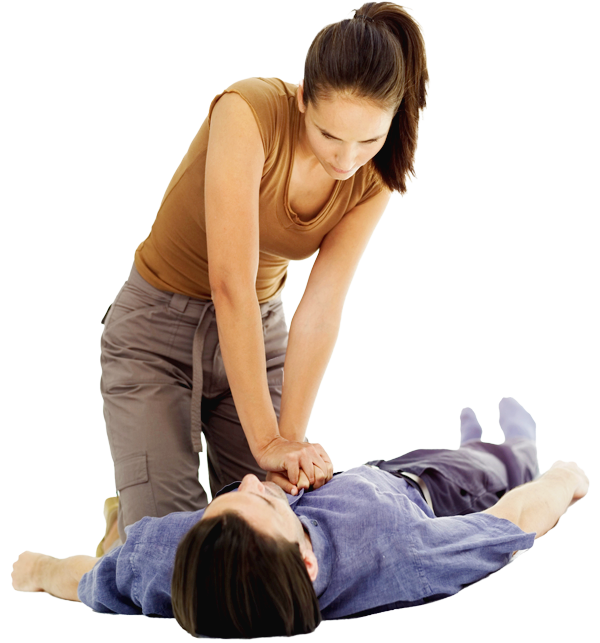HLTAID009 Provide Cardiopulmonary Resuscitation
Admissions Open for 2024
Hurry! Enrol now and take the first step towards a rewarding career ahead.

Admissions Open for 2024
Hurry! Enrol now and take the first step towards a rewarding career ahead.

Application
This unit describes the skills and knowledge required to perform cardiopulmonary resuscitation (CPR) in line with the Australian Resuscitation Council (ARC) guidelines.
This unit applies to all persons who may be required to provide CPR, in a range of situations, including community and workplace settings.
Specific licensing/regulatory requirements relating to this competency, including requirements for refresher training should be obtained from the relevant national/state/territory Work Health and Safety Regulatory Authorities.
Unit Code And Name
HLTAID009 Provide cardiopulmonary resuscitation
Client Groups
This program is for:
Duration
8.5 hours face to face training and assessment in a classroom environment.
Entry Requirements:
There are no specific entry requirements for this course.
However, Chelsea College has got its own admission requirements:
Course Fees
Please contact one of the friendly team members of Chelsea College on +61 470 557 597 for the updated fees.
Delivery Location
This qualification will be delivered at the head office or any other convenient location depending on the cohort/group's requirement. These locations are often rented spaces in community centres or office premises. The practical component will be delivered in a simulated environment.
While hiring the training rooms, Chelsea College will conduct the suitability check of the premises by using the training venue checklist, to make sure that premise is suitable for training and assessment. Chelsea College will organise all the resources required for delivery of training and assessment prior to the commencement of training
Course Content:
This unit describes the skills and knowledge required to perform cardiopulmonary resuscitation (CPR) in line with the Australian Resuscitation Council (ARC) Guidelines.
This unit applies to all workers who may be required to provide CPR, in a range of situations, including community and workplace settings.
Students will be trained and assessed on the following criteria:
| Elements | Performance Criteria |
|---|
| Elements describe the essential outcomes | Performance criteria describe the performance needed to demonstrate achievement of the element. |
| 1. Respond to an emergency situation. |
1.1. Recognise and assess an emergency situation. 1.2. Ensure safety for self, bystanders and casualty. 1.3. Assess the casualty and recognise the need for cardiopulmonary resuscitation (CPR). 1.4. Seek assistance from emergency services. |
| 2. Perform CPR procedures. |
2.1. Perform CPR in accordance with the ARC guidelines. 2.2. Display respectful behaviour towards casualty. 2.3. Operate an automated external defibrillator (AED) according to manufacturers’ instructions. |
| 3. Communicate details of the incident. |
3.1. Accurately convey incident details to emergency services. 3.2. Report details of incident in line with appropriate workplace or site procedures. 3.3. Maintain privacy and confidentiality of information in line with statutory or organisational policies. |
| 4. Review the incident. |
4.1. Recognise the possible psychological impacts on self and other rescuers and seek help when required. 4.2. Contribute to a review of the first aid response as required. |
Student will also be required to show the evidence of the ability to complete tasks outlined in elements and performance criteria of this unit in the context of the workplace or community setting.
There must be evidence that the candidate has completed the following tasks in line with State/Territory regulations, first aid codes of practice, first aid guidelines determined by the Australian Resuscitation Council (ARC) and other Australian national peak clinical bodies and workplace or site procedures:
The student will also be trained and assessed on the following:
Knowledge Evidence
The Student will be required to demonstrate knowledge required to complete the tasks outlined in elements and performance criteria of this unit:
Assessment Methods:
Assessment of this unit incorporates a combination of theory and practical assessment tasks through group discussions, role plays and self-paced reading to ensure practice the most out of it. Practical assessment is conducted by participating in a simulated environment.
If students are unable to achieve competency, additional support is provided through mentoring and access to re-assessment as outlined in our policies and procedures. Assessment requires achievement across all tasks to demonstrate competence and may include:
Resources / Materials
Apart from Human Resources including training and assessment staff, and support staff, the following will be provided by Chelsea College.
Learning Resources
Chelsea College will provide Learners with equipment and resources as specified in the HLT training package.
Learners will have access to a simulated environment, role-playing participants and all the relevant equipment and resources of that workplace or community environment for specific units as specified in the Training package for assignment work, to provide the Learner with a functional operating environment to base their training & assessment on. Access to the following resources must be available:
Physical Resources
Facilities, Equipment and Learning Resources
Chelsea College will provide facilities, equipment and all the learning resources required to deliver training and assessment of the unit according to its requirements. Chelsea College will provide training / assessment facility in form of classrooms and simulated environment for training and assessment and all other resources required to deliver the unit of competency.
Assessment Conditions:
Skills will be demonstrated working individually in an environment that provides realistic in-depth, industry-validated scenarios and simulations to assess candidates’ skills and knowledge.
Assessment resources include:
Simulated assessment environments simulate the real-life working environment where these skills and knowledge would be performed, with all the relevant equipment and resources of that working environment.
Chelsea College’s responsibilities to the students:
Licensing/ Regulatory Information
Specific licensing /regulatory requirements relating to this competency, including requirements for refresher training should be obtained from the relevant national/state/territory Work Health and Safety Regulatory Authorities.
This course is valid for 12 Months from your course completion.
Completion
Upon successful completion of this course, student will receive a Statement of Attainment for the unit of competency HLTAID009 Provide Cardiopulmonary Resuscitation.
Please note that Chelsea College does not provide any guarantee of: